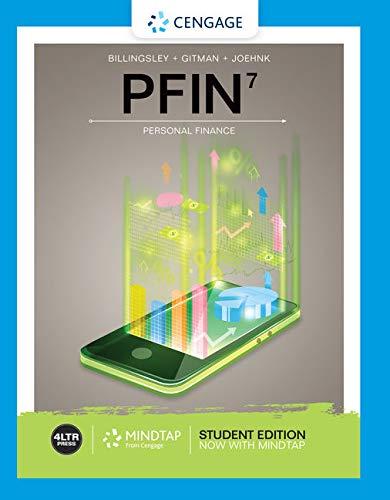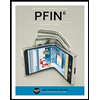
Investment Selection Given that Madrigal Pharmaceuticals was up by about 516 percent for 2017, why didn’t all investors hold Madrigal?
To discuss: The reason for not holding stocks of Company M even after knowing that Company M was up by 516 percent in 2017.
Introduction: Investors can earn returns from any investment in stocks in two forms, i.e., by capital gains due to an increase in stock value in the market or by dividends distributed by the company at a specified time period.
Answer to Problem 1CQ
The reason could be high-risk involvement due to high volatility.
Explanation of Solution
Given Information: Company M was up by 516 percent in 2017 and Company S was also up by 438 percent of gains. But there were some companies whose share prices dropped.
Investors can invest in any stock depending on the company’s previous performance along with the potential of earning returns and the risk associated with the investment. When company M’s shares were up by 516 percent in 2017 many investors were happy but many people would have wished to invest in Company M at that time. But even after knowing that share was up in 2017 many investors do not hold shares of company M due to high-risk involvement. The increase of 516 percent shows that the volatility of the stock price is high. Investors holding shares of Company M may bear huge profits but it is also likely that investors of Company M may incur huge losses in the future.
Therefore, not all investors are ready to take high risks.
Want to see more full solutions like this?
Chapter 10 Solutions
CORPORATE FINANCE - LL+CONNECT ACCESS
- What is the 4% rule in retirement planning in finance? no aiarrow_forwardWhat is the 4% rule in retirement planning in finance?arrow_forward(Calculating NPV) Carson Trucking is considering whether to expand its regional service center in Moab, Utah. The expansion will require the expenditure of $10,000,000 on new service equipment and will generate annual net cash inflows from reduced costs of operations equal to $2,500,000 per year for each of the next 8 years. In year 8, the firm will also get back a cash flow equal to the salvage value of the equipment, which is valued at $1 million. Thus, in year 8, the investment cash inflow will total $3,500,000. Calculate the project's NPV using a discount rate of 9 percent. If the discount rate is 9 percent, then the project's NPV is (round your answer to the nearest dollar) Sarrow_forward
- (Calculating annuity payments) The Aggarwal Corporation needs to save $7 million to retire a(n) $7 million mortgage that matures in 17 years. To retire this mortgage, the company plans to put a fixed amount into an account at the end of each year for 17 years. The Aggarwal Corporation expects to earn 13 percent annually on the money in this account. What equal annual contribution must the firm make to this account to accumulate the $7 million by the end of 17 years? The equal annual contribution Aggarwal must make to this account is (round your answer to the nearest cent) $.arrow_forward(Calculating NPV) Big Steve's Swizzle Sticks is considering the purchase of a new plastic stamping machine. This investment will require an initial outlay of $95,000 and will generate net cash inflows of $17,000 per year for 11 years. a. What is the project's NPV using a discount rate of 13 percent? Should the project be accepted? Why or why not? b. What is the project's NPV using a discount rate of 14 percent? Should the project be accepted? Why or why not? c. What is this project's IRR? Should the project be accepted? Why or why not?arrow_forwardThe number of years it will take for $490 to grow to $1,057.86 at 7 percent compounded annually is (type your answer in years, round to one decimal place) years.arrow_forward
- The number of years it will take for $500 to grow to $1,039.50 at 5 percent compounded annually is (type your answer in years, round to one decimal place) years.arrow_forward(Round your answer to the nearest cent.) $5,000 invested for 10 years at 10 percent compounded annually will accumulate to $arrow_forwardWhat is the difference between operating leverage and financial leverage in finance? i need coarrow_forward
- What is the Sharpe ratio and how is it used to evaluate investments? need helparrow_forwardWhat is the difference between operating leverage and financial leverage in finance? need helparrow_forwardA comparative balance sheet and income statement is shown for Cruz, Incorporated. CRUZ, INCORPORATED Comparative Balance Sheets At December 31 2021 2020 Assets Cash Accounts receivable, net $ 85,600 36,800 $ 21,300 Prepaid expenses Inventory Total current assets Furniture Accumulated depreciation-Furniture Total assets Liabilities and Equity Accounts payable Wages payable 77,100 45,200 84,900 4,700 3,900 204,200 155,300 94,700 (14,700) $ 284,200 $ 13,400 8,000 (8,400) $ 257,400 $ 19,000 4,500 110,500 Income taxes payable 1,400 2,500 Total current liabilities Notes payable (long-term) Total liabilities Equity Common stock, $5 par value Retained earnings 22,800 26,000 28,900 66,400 51,700 92,400 204,000 28,500 162,300 2,700 Total liabilities and equity $ 284,200 $ 257,400 CRUZ, INCORPORATED Income Statement Sales For Year Ended December 31, 2021 $ 440,700 283,700 157,000 Cost of goods sold Gross profit Operating expenses (excluding depreciation) Depreciation expense Income before taxes…arrow_forward
 Pfin (with Mindtap, 1 Term Printed Access Card) (...FinanceISBN:9780357033609Author:Randall Billingsley, Lawrence J. Gitman, Michael D. JoehnkPublisher:Cengage Learning
Pfin (with Mindtap, 1 Term Printed Access Card) (...FinanceISBN:9780357033609Author:Randall Billingsley, Lawrence J. Gitman, Michael D. JoehnkPublisher:Cengage Learning PFIN (with PFIN Online, 1 term (6 months) Printed...FinanceISBN:9781337117005Author:Randall Billingsley, Lawrence J. Gitman, Michael D. JoehnkPublisher:Cengage Learning
PFIN (with PFIN Online, 1 term (6 months) Printed...FinanceISBN:9781337117005Author:Randall Billingsley, Lawrence J. Gitman, Michael D. JoehnkPublisher:Cengage Learning


